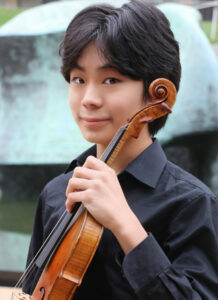 7 Ways How to be More Musical
7 Ways How to be More Musical
Being musical goes beyond just playing the right notes at the right time. It’s about infusing your performance with emotion, expression, and a sense of artistry that captivates your audience. Whether you’re a beginner or an advanced musician, understanding the various elements that contribute to musicality can elevate your playing. In this 7 Ways How to be More Musical tutorial, we’ll explore key aspects such as mood/character, energy, dynamics, articulation, phrasing, timing, and vibrato to help you become a more musical performer.
Mood & Character
The mood and character of a piece set the emotional tone and context for your performance. Here’s how to bring these elements to life:
- Understand the Piece: Study the background and story behind the composition. What is the composer trying to convey?
- Express Emotion: Use your instrument to express the emotions of the piece. For example, a minor key might evoke sadness or introspection, while a major key might suggest joy or triumph.
- Visualize the Scene: Imagine a scene or storyline that fits the music. This visualization can guide your expressive choices.
Energy
Energy is the driving force that propels the music forward and keeps the audience engaged.
- Vary Intensity: Different sections of a piece may require different levels of energy. Build intensity during climaxes and relax during softer sections.
- Body Movement: Your physical movements can reflect the energy of the music, where the idea of ‘motion equals emotion’ can truly shine. Use body language to enhance your performance without becoming distracting.
Dynamics
Dynamics refer to the volume variations in music and are crucial for creating contrast and interest.
- Play Soft and Loud: Practice playing passages at various dynamic levels. Use crescendos (gradually getting louder) and decrescendos (gradually getting softer) to add dimension.
- Dynamic Markings: Pay close attention to dynamic markings in the sheet music. They provide valuable guidance on how to shape each phrase.
Articulation
Articulation determines how individual notes are played and connected, ie slur, legato, detache, marcato, staccato, spiccato, ricochet, sautille, etc.
- Legato: Play notes smoothly and connectedly. This is useful for lyrical, flowing passages.
- Staccato: Play notes short and detached. This technique adds clarity and lightness to your performance.
- Accents: Emphasize certain notes to create rhythmic interest and highlight important musical moments.
Phrasing
Phrasing involves grouping notes into coherent musical sentences, much like how we speak in sentences and paragraphs.
- Breath Marks: Just as singers need to breathe, instrumentalists should consider natural pauses and breaths in the music.
- Shape the Phrase: Think about the direction of each phrase. Where does it start, peak, and end? Use dynamics and articulation to shape the phrase accordingly.
Timing
Timing is about playing notes in the right rhythmic context, which includes being on the beat, behind the beat, or in front of the beat.
- On the Beat: Playing exactly in time with the metronome. This is crucial for ensemble playing and rhythmic precision.
- Behind the Beat: Playing slightly after the beat. This can create a relaxed, laid-back feel, often used to create a dragging feeling.
- In Front of the Beat: Playing slightly ahead of the beat. This technique adds urgency and drive, commonly found in energetic genres like rock and pop.
Vibrato
Vibrato is a slight fluctuation in pitch that adds warmth and expression to sustained notes.
- Control: Practice controlling the speed and width of your vibrato. Faster, narrower vibrato can sound intense and dramatic, while slower, wider vibrato can sound warm and emotional.
- Context: Use vibrato sparingly and where it fits the style of the music. Overuse can diminish its effect.
Becoming a musical performer involves mastering various techniques that add depth and expression to your playing. By focusing on mood and character, energy, dynamics, articulation, phrasing, timing, and vibrato, you can transform your performance from merely accurate to truly captivating.
